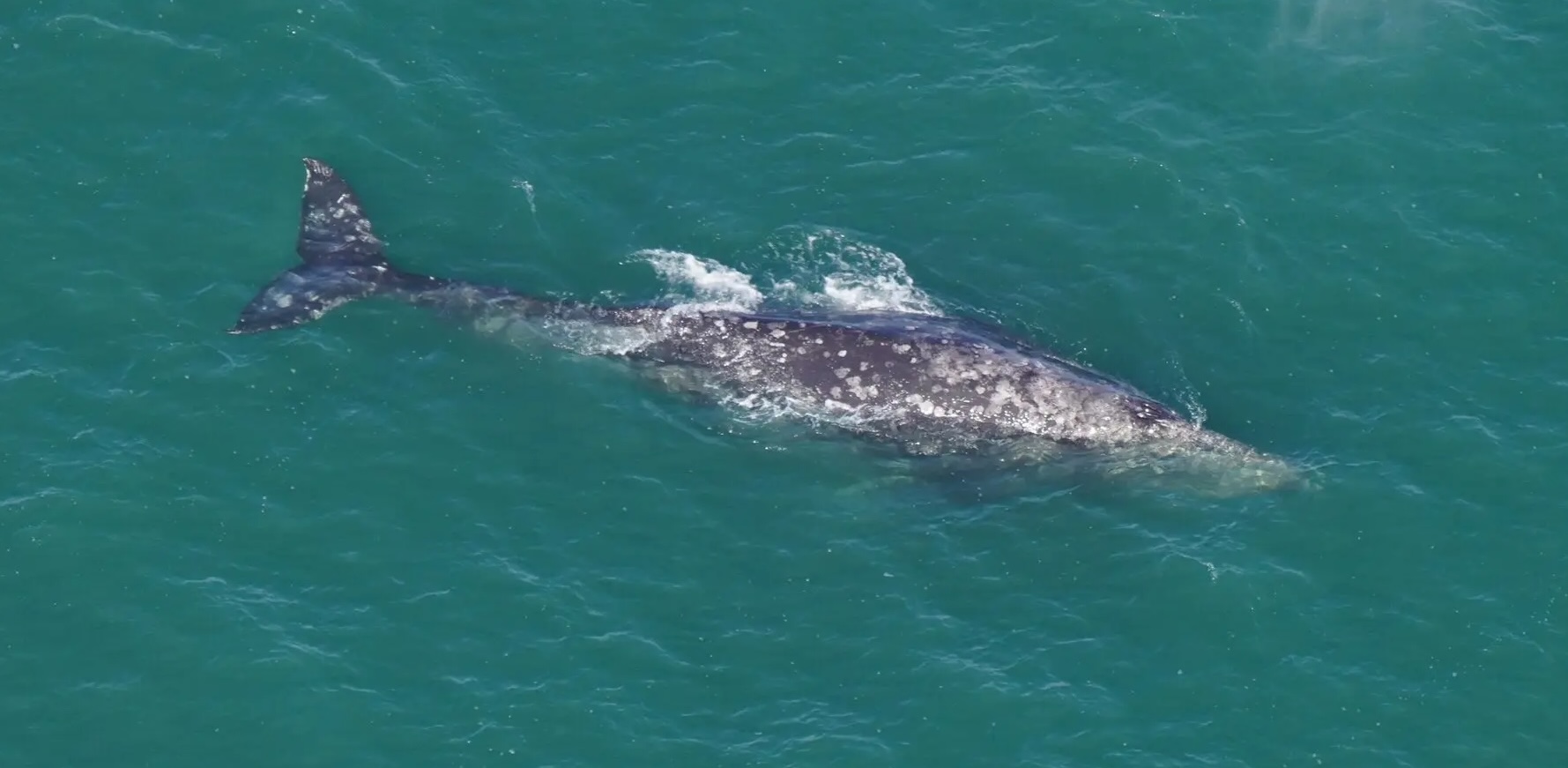
By DANA TIMS/YachatsNews
A Pacific gray whale spotted off the coast of Miami in December has apparently made its way north to Massachusetts, where it continues generating headlines and stunned scientific reaction.
Gray whales, after all, belong in the Pacific Ocean, where thousands make twice-annual trips to feeding and calving grounds off Alaska and Mexico, respectively.
Where they aren’t supposed to be is an ocean away in the Atlantic, where, until last week, no gray whale sightings had been made in New England’s waters since the 18th century.
The New England Aquarium, whose aerial survey team spotted the whale March 1, called the sighting “an incredibly rare event.”
“I didn’t want to say out loud what it was, because it seemed crazy,” Orla O’Brien, an associate research scientist in the Anderson Cabot Center for Ocean Life at the aquarium, said in a statement.
“My brain was trying to process what I was seeing, because this animal was something that should not really exist in these waters,” added research technician Kate Laemmle, who was also on the plane that spotted the whale. “We were laughing because of how wild and exciting this was – to see an animal that disappeared from the Atlantic hundreds of years ago.”
The sighting marked the fifth time in the last 15 years that a gray whale had been spotted in the Atlantic and Mediterranean, according to the aquarium.
Some experts say it’s possible that diminishing levels of sea ice may be allowing gray whales that normally spend their summers off Alaska and British Columbia to swim through the Arctic and into the Atlantic and beyond.
And while they marvel at gray whales’ ability to swim so far, they also worry that the trips could be driven by climate change and the disappearance of the prey gray whales typically expect to survive on in the northern Pacific and Arctic.
“There’s a potential that some of these unusual sightings in the Atlantic could be the result of that,” Joshua Stewart, a quantitative ecologist at Oregon State University, said in a New York Times story about the sighting. Gray whales in the Pacific and Arctic, he added, “are just not getting what they need to survive so they’re searching for food elsewhere, so we see them in all kinds of weird places.”
Recent estimates put the total number of gray whales at about 14,000. That’s a big drop from 27,000 in 2019, with scientists attributing the decline to an “unusual mortality event” mostly likely caused by a loss of prey in the Arctic.
Most of the formally named Eastern North Pacific population travels right on past Oregon’s coast during their southern migration to their winter breeding grounds in Mexico. They then make a northward return journey in summer to feeding grounds in the Bering and Chukchi seas between Alaska and Russia.
A much smaller subset, called the Pacific Coast Feeding Group, numbers just over 212 individuals and spends summer months feeding in near-coast waters off Oregon, Washington, southern Canada and northern California.

Researchers, including Clara Bird, an Oregon State University doctoral candidate, say that gray whales have moved between the Atlantic and Pacific several times over the past thousand years, “when sea level and climate conditions (including ice cover) allowed them to,” Bird wrote in a recent blog post. “Meaning, that we could be seeing a pattern of mixing whale populations between the two oceans repeating itself.”
The rare sightings of gray whales outside their usual habitat could be a sign of things to come, Stewart told the New York Times.
“What is really cool is that we could be watching the recolonization of the Atlantic gray whale in real time,” Stewart said.
He told The Times that he does not expect a full recolonization of Atlantic gray whales to happen anytime soon, noting that the process could take decades, even centuries. But because of the rapid rate of warming waters, Stewart said, “we might be witnessing the very beginning of that.”



